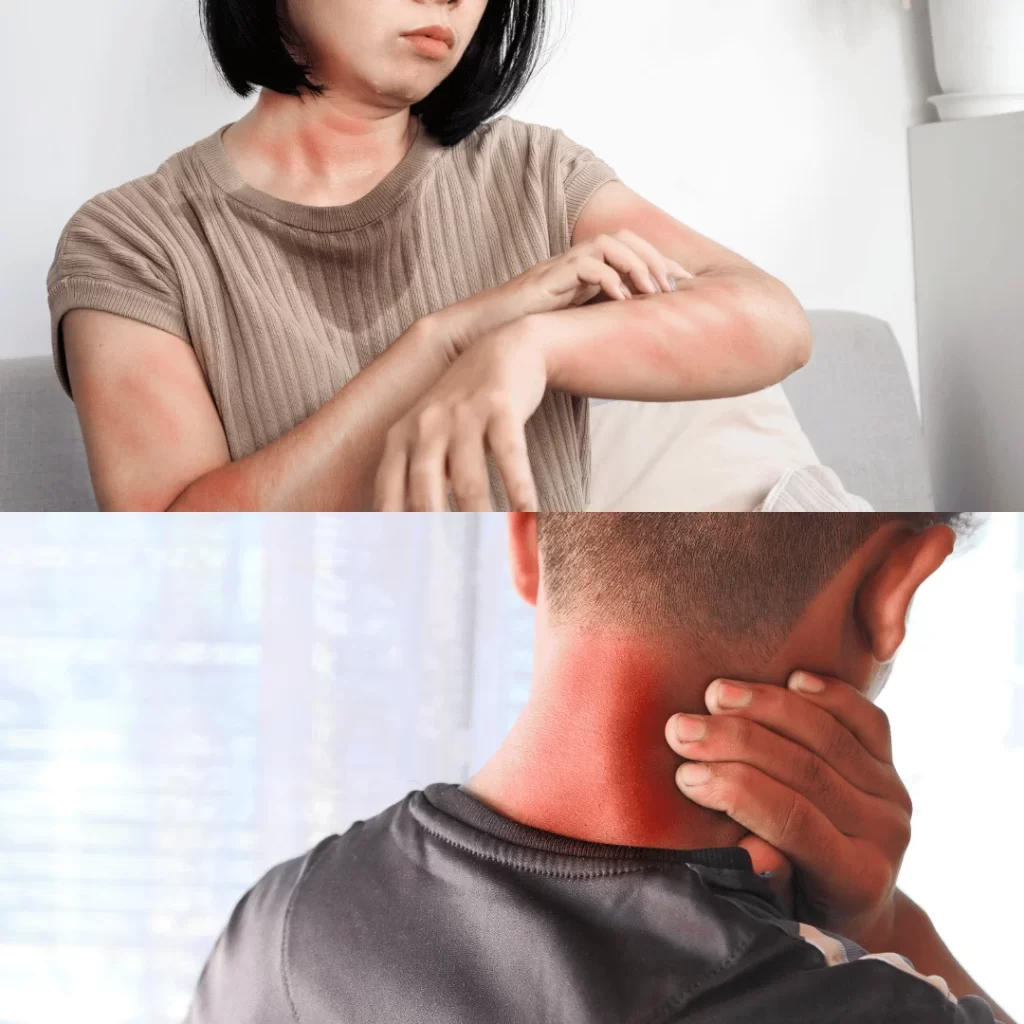How does Ayurveda address immune system weakness associated with Morphea?
According to Ayurveda, our diet and lifestyle are two of the most significant components of maintaining good health. But if they are disrupted, it causes disturbances in the natural balance known as Prakriti (constitution). Morphea is one such autoimmune disorder marked by confined skin thickening and stiffness, and this can make you feel vulnerable. But don’t worry! Ayurveda is there for you. It provides a comprehensive approach to treat Morphea, addressing both the skin symptoms and the underlying immune system deficiency. So let us dive deep into it.

Ayurvedic Aspect
In Ayurveda, linear morphea needs to be stated correctly. As this sickness is caused by a lack of immunity, it can be compared to vyadhi kshamatav (in which the body is unable to fight diseases). This is made up of two words: vyadhi and kshamatav. Vyadhi denotes that the body is suffering from any physical or mental sickness, indicating that the body’s fundamental parts are damaged. On the other hand, Kshmatav refers to the body’s ability to protect itself against different illnesses.
Signs and Symptoms of Morphea
The signs and symptoms of morphea vary according to the stage and severity of the disorder. Some common indications and symptoms are:
- Discoloured spots on the skin.
- Linear spots of discoloured skin appear on the arms and legs.
- Skin areas gradually get tougher and drier.
- Patched skin appears darker than usual and eventually gets darker.
- The afflicted region includes hair loss and sweat gland loss.
- Morphea typically affects the skin and underlying tissues, but in severe circumstances, it can also damage the bones and muscles.
Factors Aggravating the Imbalance
According to Ayurveda, while internal abnormalities are a fundamental perspective of Morphea, some external events could worsen the already existing doshic disharmony.
- A heavy, oily, or spicy diet might exceed Agni and cause Ama development, and this might aggravate the internal abnormalities linked with Morphea.
- Chronic stress can disturb the doshas’ delicate state of balance. According to Ayurveda, stress is an aggravator of Vata dosha that can damage the skin barrier and worsen the Morphea symptoms.
- Toxins in the environment can also lead to ama development. This can weaken the body’s natural defences and increase the potential risk to Morphea.
Ayurveda's Approach to Morphea
Ayurveda approaches Morphea from a variety of perspectives, addressing both the skin problem and the underlying immune system weakness:
- Shodhana (Purification): Virechana (therapeutic purgation) and herbal laxatives can help remove Ama, lowering immune system stress and increasing well-being.
- Shamana (Pacification): The herbal compositions of Neem, Manjistha, and Guduchi can regulate inflammation, minimise skin thickness, and boost the immune system. These herbs can be taken orally or used topically as therapeutic oils or pastes.
- Snehana and Swedana (Oleation and Sweating): These therapies help to improve blood circulation, detoxification, and skin nourishment. Snehana includes a heated oil massage, whereas Swedana uses steam cabinets or herbal saunas to cause sweating.
- Dietary Changes: An Ayurvedic diet focuses on easily digested foods such as fruits, vegetables, and whole grains. Spicy, acidic, and oily meals may stress the Pitta dosha and aggravate inflammation.
- Lifestyle Practices: Incorporating stress-management activities like yoga and meditation is vital. Stress can aggravate morphea and deplete the immune system. Adequate sleep is also required to boost immunity.
- Rasayana Therapy: Herbs like Ashwagandha and Amalaki are known for their rejuvenating effects. They have the potential to strengthen the body’s tissues, boost general health, and promote a healthy immune system.
By applying Ayurveda’s Dosha-Dushya principles, Ayurvedic practitioners can precisely address the disease and obtain positive treatment results.
Complications
While Morphea’s bodily symptoms are obvious, Ayurveda goes deeper to find out how these manifestations represent underlying imbalances. Let’s look at some of the problems with Morphea from an Ayurvedic perspective.
1. Self-Esteem and Body Image
Discoloured patches and hard skin can result in Viveka Hani (impaired discernment). In Ayurveda, this imbalance between the mind and body can result in disharmony and disconnection from the body. When the doshas are misaligned, they can emerge both physically and emotionally, resulting in low self-confidence or anxiety.
2. Hair Loss and Oil Gland Damage
Morphea is frequently associated with hair loss and oil gland damage, which can be linked to Vata Prakopa (aggravated Vata dosha). Vata regulates circulation and nutrition. When Vata becomes excessive, it can cause shushka (dryness) and diminished blood flow to the scalp, resulting in hair loss. Furthermore, Vata Prakopa could hinder the formation of Saha (sebum), the natural oil generated by the glands, resulting in dryness and injury.
3. Eye Damage
Morphea can potentially impact the eyes, resulting in visual issues, and might be seen as a reflection of Drishti Dosha. According to Ayurveda, the eyes serve as a mirror for one’s inner wellness. Eye problems may be the result of a systemic imbalance, perhaps including Pitta Dosha Vaigunya (vitiated Pitta dosha). Pitta regulates vision, and its irritation can cause Daha (burning sensation) and Shotha (inflammation) in the delicate tissues of the eye.
4. Reduced Joint Mobility
Morphea’s skin thickening and hardening limit joint movement and cause discomfort. This might be linked to a Vata-Kapha Virodha (dosha conflict). Vata controls mobility, whereas Kapha directs structure. And, when Kapha is overloaded, it can cause stiffness and limited mobility, whereas Vata imbalance can cause Shula (pain).
Conclusion
Ayurveda’s approach to treating morphea and increasing immunity is an approach to inner and outer harmony. By adopting dietary changes, stress-reduction methods, potent herbs, and specialized treatments, you can help balance your doshas, support your body’s natural detox, and feel a revitalised sense of well-being that extends beyond skin health. Overall, it is a comprehensive method that will help you on your journey to a healthier, happier self.